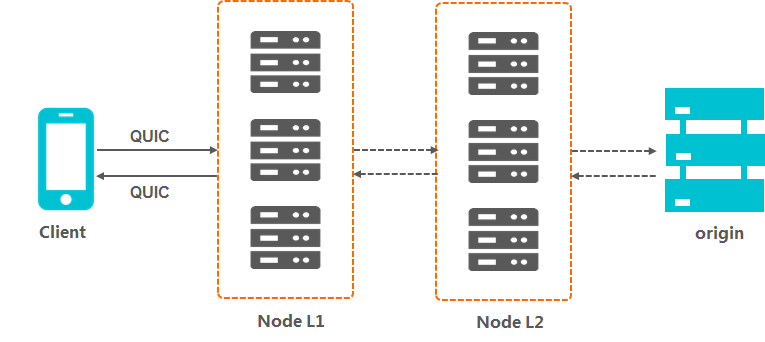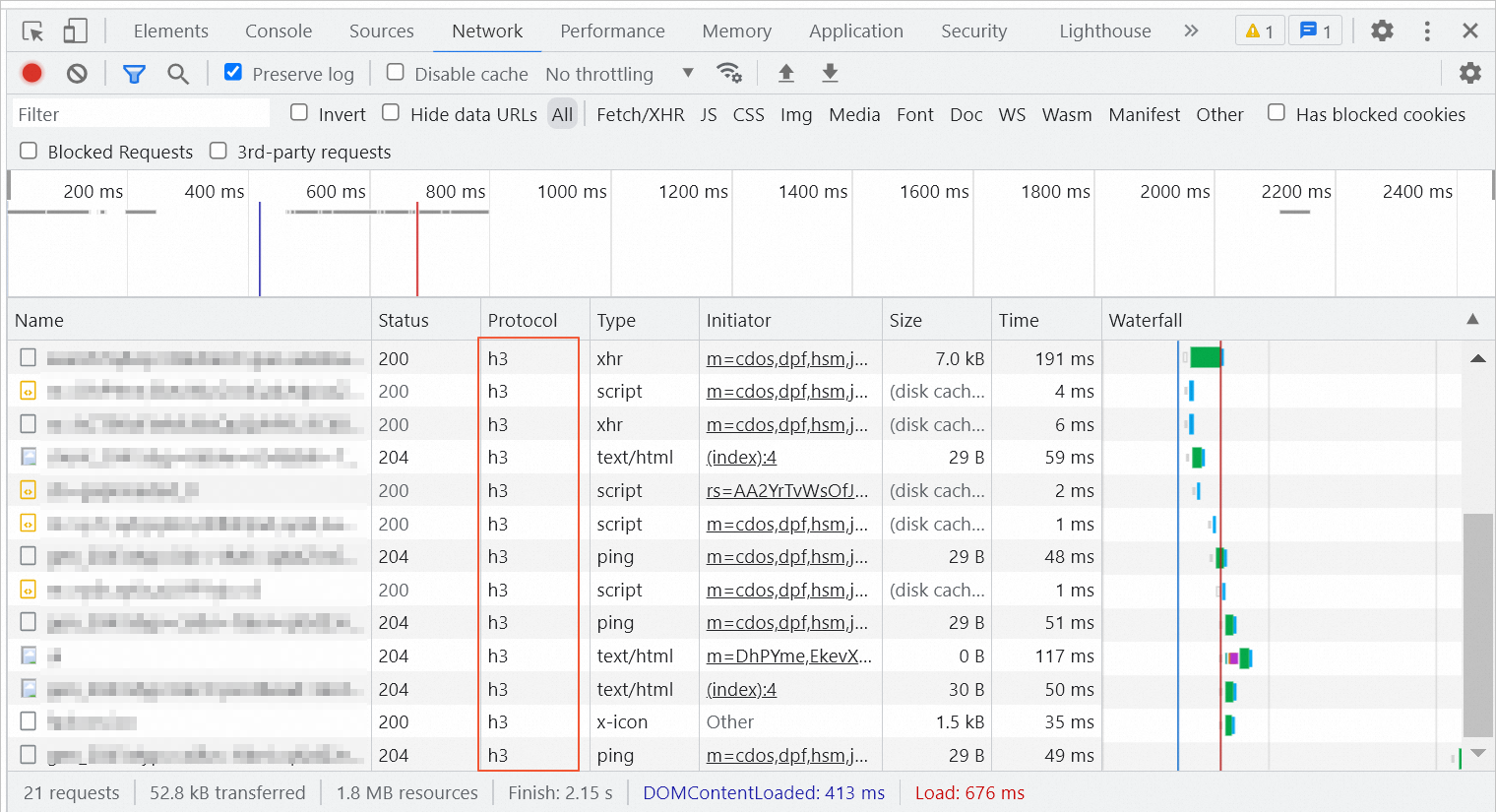The Quick UDP Internet Connections (QUIC) protocol provides the same level of security as TLS/SSL but delivers lower connection and transmission latency. If you want to improve content delivery efficiency and ensure data transmission security, enable QUIC.
HTTP/3 and QUIC
What is HTTP/3?
HTTP/3 is the third version of the HTTP protocol, which uses QUIC as the underlying transmission protocol instead of Transmission Control Protocol (TCP) and Transport Layer Security (TLS). HTTP/3 retains many features of HTTP/2, such as header compression and multiplexing, and can better handle network congestion to reduce access latency.
What is QUIC?
QUIC is a transport layer network protocol designed to provide security comparable to TLS/SSL while reducing connection and transmission latency. QUIC is developed based on UDP and has an excellent performance when network connections are weak. When packet loss and network latency issues are severe, QUIC can still ensure service availability. QUIC can implement different congestion control algorithms for applications, regardless of the operating system or kernel that is used. Compared with TCP, QUIC supports flexible changes based on business requirements. QUIC is a suitable alternative in scenarios where further TCP optimization is difficult or has hit a bottleneck.
CDN supports QUIC that is implemented at Layer 7.
QUIC types
CDN supports IETF QUIC, which is a standard Internet protocol.
Client requirements
QUIC has the following requirements for clients:
If you use Google Chrome, you can send QUIC requests to CDN since CDN supports HTTP/3.
If you use a self-developed app, the app must be integrated with a network protocol library that supports QUIC, such as lsquic-client, Cronet, ngtcp2, or quiche.
How it works
The following figure shows how QUIC works with CDN.
Billing rules
QUIC is a value-added service. You are charged based on the number of QUIC requests. For more information, visit the CDN pricing page.
CDN identifies QUIC requests based on whether they are transmitted over UDP.
For requests received over UDP on port 443, CDN uses Application-Layer Protocol Negotiation (ALPN) to check if the connection is using HTTP/3 (e.g., with identifiers like h3 or h3-29). If it is, the request is identified and billed as a QUIC request. Otherwise, it is treated as a standard HTTPS (TCP-based) request and billed accordingly.
Billing method
Billable item | Billing rule | Billing method | Billing cycle |
Billing of QUIC requests for static content | Number of requests to the domain name + Number of loads of static resources that are associated with the domain name | Pay-as-you-go | You are charged on an hourly basis. Bills are issued approximately 3 to 4 hours after the end of each billing cycle. |
Enable QUIC
Log on to the Alibaba Cloud CDN console.
In the left navigation pane, click Domain Names.
On the Domain Names page, find the domain name that you want to manage and click Manage in the Actions column.
In the left navigation pane, click QUIC Protocol, and turn on QUIC Protocol.

How to identify QUIC requests
In the following example, Google Chrome is used to show how to identify QUIC requests.
Right-click on a blank area of the web page and select Inspect to open the developer tools. Then, navigate to the Network tab. If the value in the Protocol column of a request is h3-29, the request was made over QUIC.
If the Protocol column is not displayed, refresh the page, right-click a row, and then choose .
The following figure shows that the Protocol column displays h3-29, which indicates that the request is a QUIC request.
